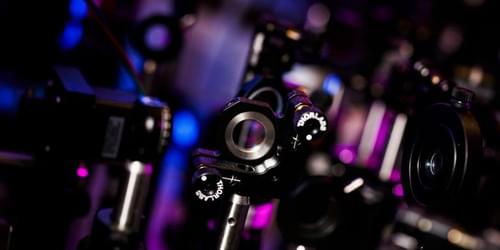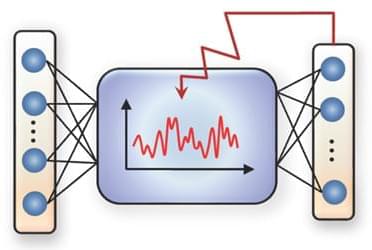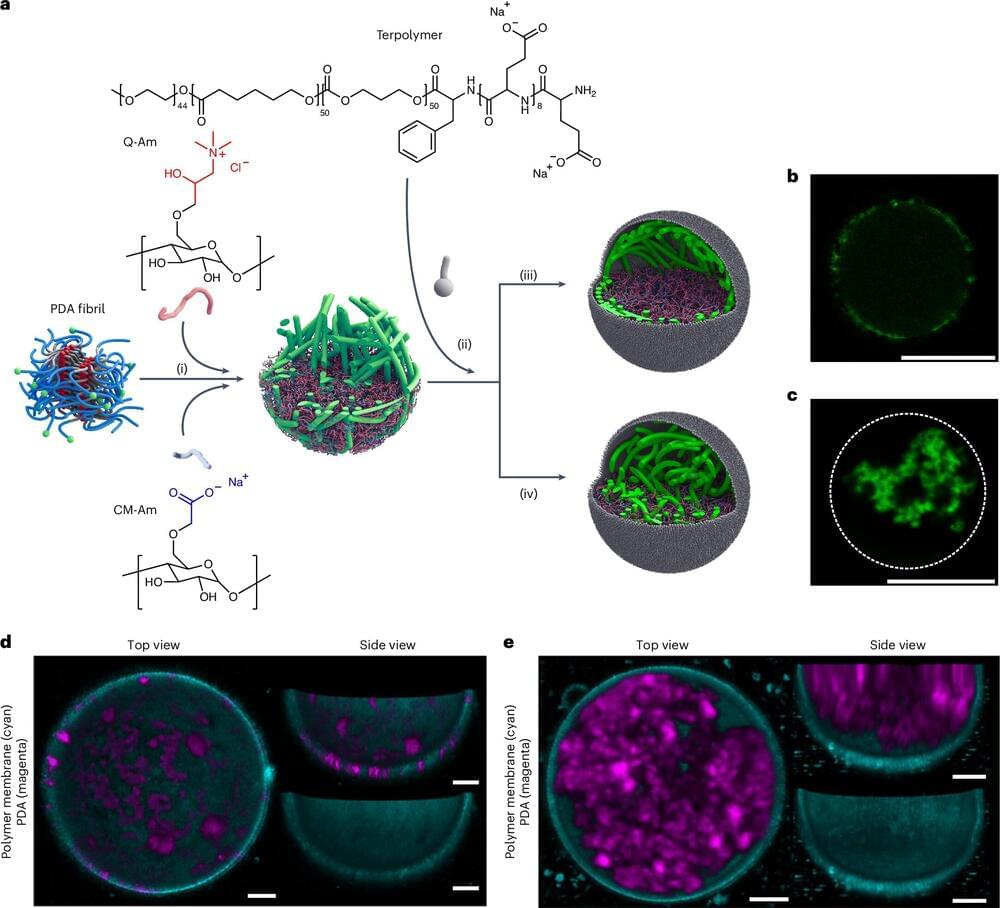Researchers show they can magnetize an antiferromagnet using terahertz light, switching the state on a million times faster than is possible for other magnetic states.
A new training technique could increase the number of physical systems that could serve as AI platforms.
Simulations of neutron stars provide new bounds on their properties, such as their internal pressure and their maximum mass.
Studying neutron stars is tricky. The nearest one is about 400 light-years away, so sending a probe would likely take half a million years with current space-faring technology. Telescopes don’t reveal much detail from our vantage point, since neutron stars are only the size of a small city and thus appear as mere points in the sky. And no laboratory on Earth can reproduce the inside of neutron stars, because their density is too great, being several times that of atomic nuclei. That high density also poses a problem for theory, as the equations for neutron-star matter cannot be solved with standard computational techniques. But these difficulties have not stopped efforts to understand these mysterious objects. Using a combination of theory-based methods and computer simulations, Ryan Abbott from MIT and colleagues have obtained new, rigorous constraints for the properties of the interior of neutron stars [1].
Experimental and computational evaluation of alpha particle production from laser-driven proton–boron nuclear reaction in hole-boring scheme
Posted in computing, particle physics | Leave a Comment on Experimental and computational evaluation of alpha particle production from laser-driven proton–boron nuclear reaction in hole-boring scheme
The majority of studies on laser-driven proton–boron nuclear reaction is based on the measurement of α-particles with solid-state nuclear tracks detector (Cr39). However, Cr39’s interpretation is difficult due to the presence of several other accelerated particles which can bias the analysis. Furthermore, in some laser irradiation geometries, cross-checking measurements are almost impossible. In this case, numerical simulations can play a very important role in supporting the experimental analysis. In our work, we exploited different laser irradiation schemes (pitcher–catcher and direct irradiation) during the same experimental campaign, and we performed numerical analysis, allowing to obtain conclusive results on laser-driven proton–boron reactions. A direct comparison of the two laser irradiation schemes, using the same laser parameters is presented.
Just like your body has a skeleton, every cell in your body has a skeleton—a cytoskeleton to be precise. This provides cells with mechanical resilience, as well as assisting with cell division. To understand how real cells work, e.g. for drug and disease research, researchers create artificial cells in the laboratory.
However, many artificial cells to date cannot be used to study how cells respond to forces as they don’t have a cytoskeleton. TU/e researchers have designed a polymer-based network for artificial cells that mimics a real cytoskeleton, thus making it possible to study with greater accuracy in artificial cells how cells respond to forces.
The research is published in the journal Nature Chemistry.
Artificial General Intelligence is on its way in 2025. What does this mean for schools and the education system?
What does the future hold for humanity in the 21st century? ► WATCH Full Episodes on 9NOW: https://9now.app.link/uNP4qBkmN6 ► Subscribe here: http://9Soci.al…
Diverse Applications Beyond Elderly Care
While companion robots have traditionally been used to support the elderly, their utility is expanding to other demographics prone to loneliness, such as office workers and university students. Dr. Li’s research in China reveals that these groups often experience social isolation and lack the resources for meaningful companionship. The physical presence of robots like Moflin and LOVOT, which offer tactile interactions, differentiates them from virtual assistants and enhances their effectiveness in providing emotional support.
[Read More: Can AI Step Out from Virtual to Real Companionship?].
Observations with the South Pole Telescope have revealed an independent addition to the biggest problem in cosmology.
T Coronae Borealis (T CrB) is a binary star system comprising two stars at very different stages of their life cycles: a red giant and a white dwarf. The red giant, an aging star, is expanding as it nears the end of its life, shedding layers of material into space. Meanwhile, the white dwarf, a stellar remnant that has burned through its fuel, is steadily cooling. This system draws the red giant’s expelled material toward the white dwarf’s surface. When enough accumulates, it triggers a thermonuclear explosion, creating a dramatic outburst of energy and light.
Astronomers know about the “Blaze Star” because it’s had sudden outbursts before. They even know there is usually a decade-long uptick in brightness before the explosion, preceded by a noticeable dip in brightness. That 10-year uptick was reported in a paper in 2023, while the American Association of Variable Star Observers announced T CrB’s pre-eruption dip in April 2024.
Something to bear in mind is that this is a rare astronomical event, but only committed stargazers are likely to get much out of it.









